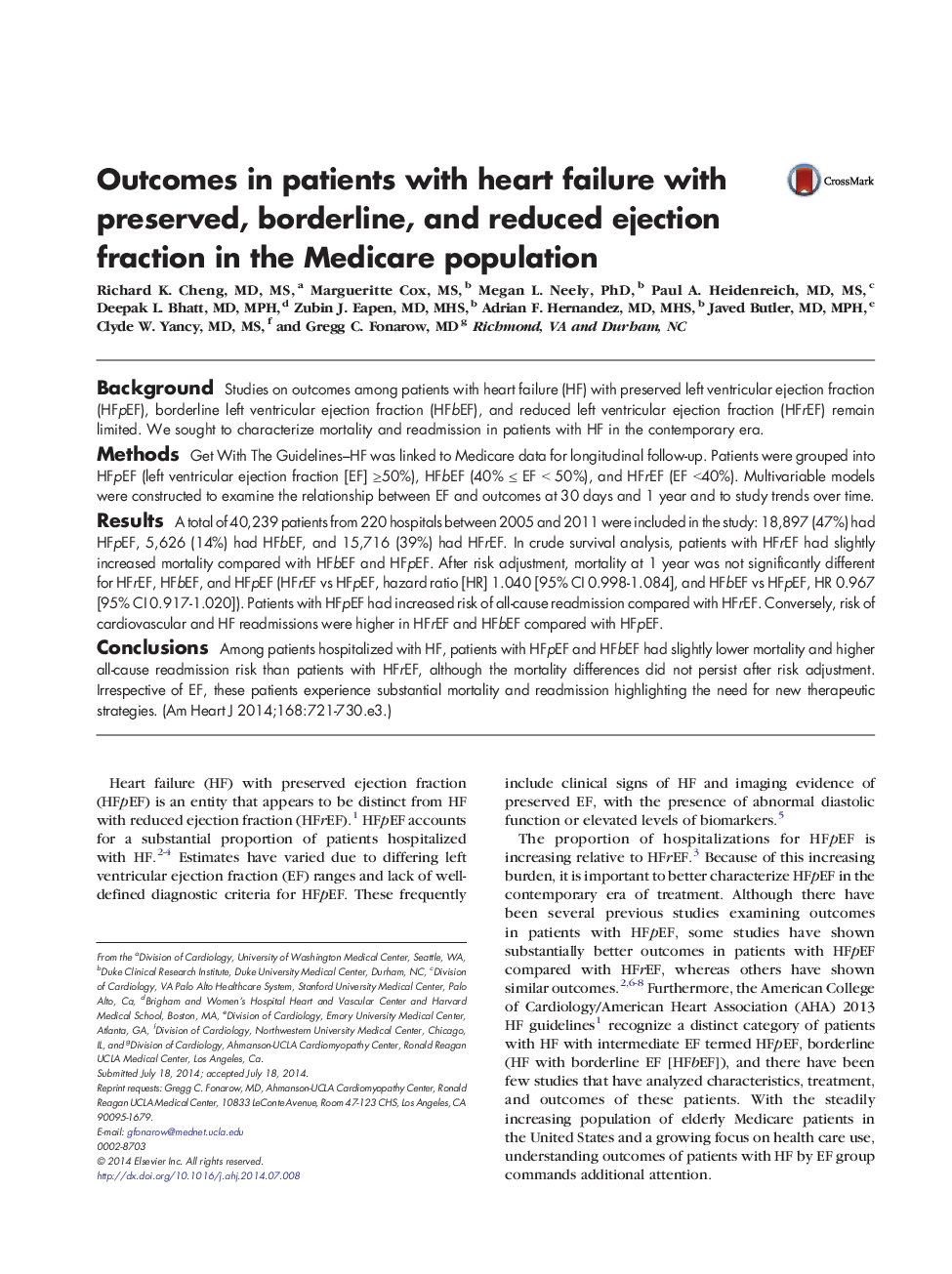| Article ID | Journal | Published Year | Pages | File Type |
|---|---|---|---|---|
| 5928378 | American Heart Journal | 2014 | 13 Pages |
BackgroundStudies on outcomes among patients with heart failure (HF) with preserved left ventricular ejection fraction (HFpEF), borderline left ventricular ejection fraction (HFbEF), and reduced left ventricular ejection fraction (HFrEF) remain limited. We sought to characterize mortality and readmission in patients with HF in the contemporary era.MethodsGet With The Guidelines-HF was linked to Medicare data for longitudinal follow-up. Patients were grouped into HFpEF (left ventricular ejection fraction [EF] â¥50%), HFbEF (40% ⤠EF < 50%), and HFrEF (EF <40%). Multivariable models were constructed to examine the relationship between EF and outcomes at 30 days and 1 year and to study trends over time.ResultsA total of 40,239 patients from 220 hospitals between 2005 and 2011 were included in the study: 18,897 (47%) had HFpEF, 5,626 (14%) had HFbEF, and 15,716 (39%) had HFrEF. In crude survival analysis, patients with HFrEF had slightly increased mortality compared with HFbEF and HFpEF. After risk adjustment, mortality at 1 year was not significantly different for HFrEF, HFbEF, and HFpEF (HFrEF vs HFpEF, hazard ratio [HR] 1.040 [95% CI 0.998-1.084], and HFbEF vs HFpEF, HR 0.967 [95% CI 0.917-1.020]). Patients with HFpEF had increased risk of all-cause readmission compared with HFrEF. Conversely, risk of cardiovascular and HF readmissions were higher in HFrEF and HFbEF compared with HFpEF.ConclusionsAmong patients hospitalized with HF, patients with HFpEF and HFbEF had slightly lower mortality and higher all-cause readmission risk than patients with HFrEF, although the mortality differences did not persist after risk adjustment. Irrespective of EF, these patients experience substantial mortality and readmission highlighting the need for new therapeutic strategies.
